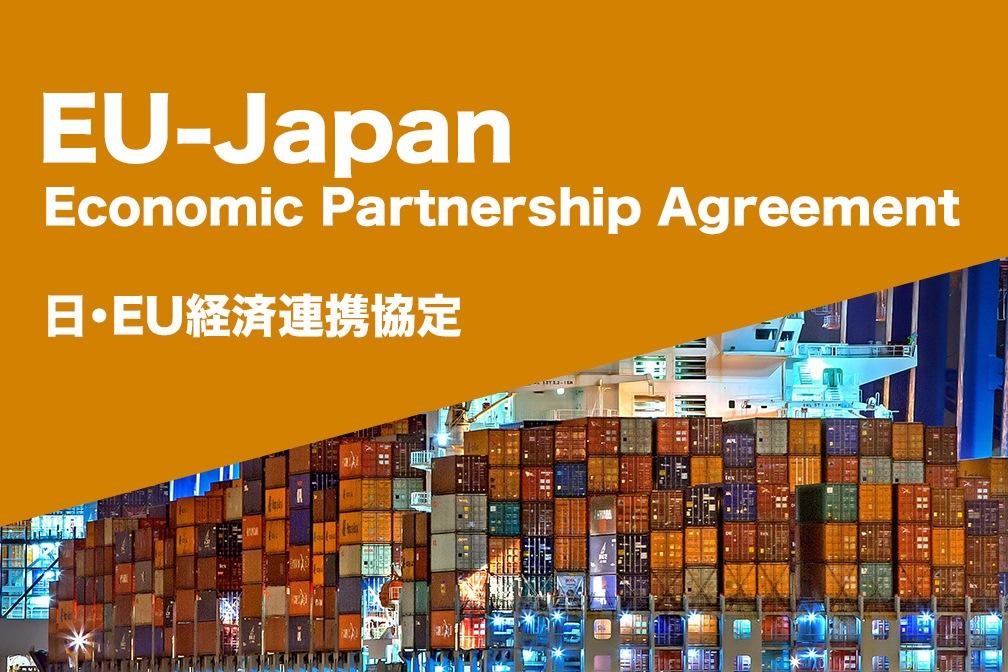EU-Japan Economic Partnership Agreement (EPA)

The EU and Japan's Economic Partnership Agreement entered into force on 1 February 2019.
EU firms already export nearly €70bn in goods and €28bn in services to Japan every year.
In the past European firms faced trade barriers when exporting to Japan, which sometimes made it hard for them to compete.
The trade agreement with Japan:
- removes tariffs and other trade barriers and creates a platform to cooperate in order to prevent obstacles to trade; and
- helps us shape global trade rules in line with our high standards and shared values, and;
- sends a powerful signal that two of the world's biggest economies reject protectionism.
The EU-Japan Centre for Industrial Cooperation has launched an EPA Helpdesk to raise awareness about the opportunities this agreement offers and to help EU SMEs take advantage of them. The Helpdesk provides up-to-date information and answers EPA-related queries. It organises webinars and publishes information packs, each of them composed of a factsheet and practical guide covering specific topics or sectors of the EPA. More detailed information is available: https://www.eu-japan.eu/epa-helpdesk
For more information about EPA, please visit DG TRADE EPA page: http://ec.europa.eu/trade/policy/in-focus/eu-japan-economic-partnership-agreement/
For more information about Small and Mid-size Enterprise (SME), please visit DG TRADE web page: http://ec.europa.eu/trade/policy/in-focus/eu-japan-economic-partnership-agreement/eu-japan-and-smes/
For more information about import and export regulations to/from EU, please visit the DG TRADE's Access2Markets web page: https://trade.ec.europa.eu/access-to-markets/en/content
Access2Markets
The Access2Markets is an interactive, free online portal offered by DG TRADE where companies interested in exporting products from the EU or importing products into the EU can find information on applicable tariffs and taxes, custom procedures, product requirements or existing barriers.
The Access2Markets includes also the Rules of Origin Self-Assessment tool (ROSA) which helps companies to assess if a product they intend to export or import meets the required rules of origin criteria.
For companies that are not familiar with international trade, the Access2Markets portal also provides more detailed guidance, such as detailed step-by-step guides for trading goods and services, explanations of key trade concepts, useful contact information for companies, company success stories, and latest news on trade-related issues.
Concerning the export conditions (including tariff etc…) of Japanese products to the EU
EU Delegation is not in a position to respond to such enquiries. Japanese exporters should instead address their questions to JETRO, to the Japanese ministries or the Japanese mission in Brussels.
Alternatively, in case the exporters wish to get in direct contact with the EU authorities, this can be done through the Commission's Export Helpdesk (http://trade.ec.europa.eu/tradehelp/). The Trade Helpdesk has been improved user friendly manner and updated on 1 February 2019 with the addition of Japan among our trade partners.
Frequently Asked Questions
Q1. I would like to export products from the EU to Japan. How can I check the tariff rate under the EPA?
A1. The Japanese tariff schedule under the EU-Japan EPA can be found at http://trade.ec.europa.eu/doclib/docs/2018/august/tradoc_157230.pdf
You can check the tariff of your specific export in the schedule but in order to check the right product information, you need to know the HS code of your product. The code used in the schedule is called HS2017 and it is the code used by the Japan customs. If you are not sure about the HS code of your export, please enquire to the Japan Customs. You can find more information about HS code at http://www.customs.go.jp/english/classification/index.htm(link is external) and make enquiry to the Japan customs from http://www.customs.go.jp/question_e.htm(link is external). Please note that the code used in the EU is CN code and it is not the same code as HS2017.
Once you have the HS code, please check tariff line column indicated on the left side of the Japan schedule. Please note that in case 1) tariff is already eliminated before the EPA entering into force and 2) tariff will be eliminated at the time of the EPA entering into force, tariff line is not included in the schedule table. Notes for the schedule of Japan are available at http://trade.ec.europa.eu/doclib/docs/2018/august/tradoc_157229.pdf#page=103 (This part contains in particular the description of the 25 TRQs (tariff rate quotas) conceded by Japan to the EU on agricultural and processed agricultural products.
Related documents- First EU-Japan EPA Progress Report (1 February 2019-31 January 2020)
- Second EU-Japan EPA Progress Report (1 February 2020 – 31 January 2021)
- Study on the impact of the EU-Japan EPA on the Leather Products Market in Japan (August 2020)
- Guide for EU Suppliers on Government Procurement in Japan (September 2020)
*Updated on 30 November 2021





